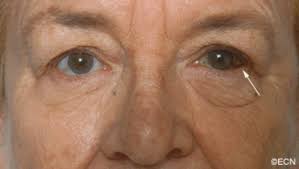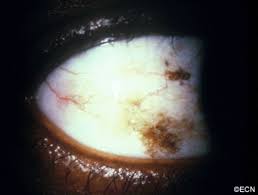Multifocal Pigmentation

There are several different types of pigmentation abnormalities that can occur, including:
- Freckles: small, flat, tan, or light brown spots that are usually found on the face, arms, and chest
- Melasma: a type of pigmentation disorder that causes dark, patchy skin discoloration, usually on the face
- Vitiligo: a condition in which the skin loses its pigment cells, resulting in white patches
- Age spots: flat, oval-shaped, brown or black spots that are often found on the face, hands, and other areas of the body exposed to the sun
- Solar lentigines: flat, brown spots that are caused by sun exposure and often found on the face, arms, and legs
If you are experiencing pigmentation abnormalities, it is important to speak with a dermatologist or other healthcare provider. They can help to diagnose the cause of the pigmentation and recommend appropriate treatment options, which may include medications, lasers, or other therapies.
What Is Multifocal Pigmentation:
Multifocal pigmentation refers to the presence of multiple areas of abnormal skin pigmentation in the same person. Pigmentation abnormalities can be caused by a variety of factors, including genetics, sun exposure, and certain medical conditions.
There are several different types of pigmentation abnormalities that can occur, including freckles, melasma, vitiligo, age spots, and solar lentigines. Each of these conditions is characterized by specific features and may require different treatment approaches.
If you are experiencing pigmentation abnormalities, it is important to speak with a dermatologist or other healthcare provider. They can help to diagnose the cause of the pigmentation and recommend appropriate treatment options, which may include medications, lasers, or other therapies.
Multifocal Pigmentation Pros:
It is important to note that multifocal pigmentation, or the presence of multiple areas of abnormal skin pigmentation, is not considered a positive or desirable condition. Pigmentation abnormalities can be caused by a variety of factors, including genetics, sun exposure, and certain medical conditions. These conditions may be associated with various symptoms and may affect a person’s appearance and self-esteem.
If you are experiencing pigmentation abnormalities, it is important to speak with a dermatologist or other healthcare provider. They can help to diagnose the cause of the pigmentation and recommend appropriate treatment options, which may include medications, lasers, or other therapies. It is not generally recommended to try to treat these conditions on your own as they may require professional medical intervention.
Multifocal Pigmentation Cons:
Multifocal pigmentation, or the presence of multiple areas of abnormal skin pigmentation, can be a source of concern for many people. Pigmentation abnormalities may affect a person’s appearance and self-esteem, and may be associated with various symptoms such as itching, redness, or sensitivity.
In addition, some pigmentation abnormalities may be indicative of underlying medical conditions, such as skin cancer or autoimmune disorders. Therefore, it is important to speak with a dermatologist or other healthcare provider if you are experiencing pigmentation abnormalities, as they can help to diagnose the cause of the pigmentation and recommend appropriate treatment options.
It is not generally recommended to try to treat these conditions on your own as they may require professional medical intervention.

If you want to get amazing benefits by using this link
In conclusion, multifocal pigmentation refers to the presence of multiple areas of abnormal skin pigmentation in the same person. Pigmentation abnormalities can be caused by a variety of factors, including genetics, sun exposure, and certain medical conditions. These conditions may affect a person’s appearance and self-esteem, and may be associated with various symptoms.
If you are experiencing pigmentation abnormalities, it is important to speak with a dermatologist or other healthcare provider. They can help to diagnose the cause of the pigmentation and recommend appropriate treatment options, which may include medications, lasers, or other therapies. It is not generally recommended to try to treat these conditions on your own as they may require professional medical intervention.



